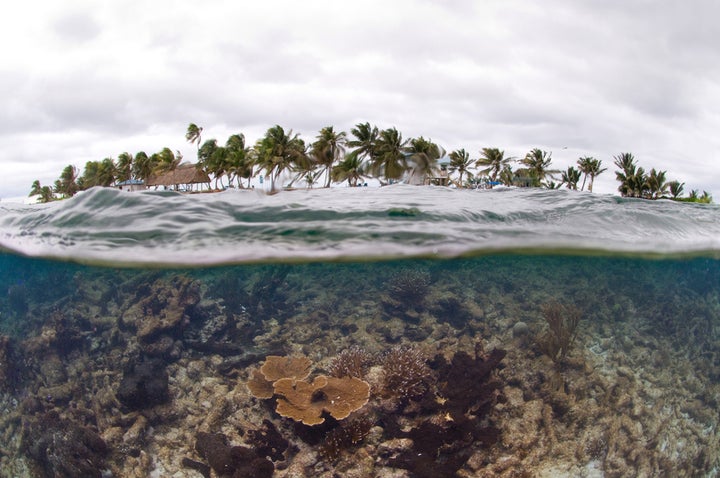
Laughing Bird Caye, Belize.
Life below the surface cannot endure without us changing how we live our lives above the surface. And that means our idea of “ocean conservation” needs to be greatly broadened.
Over the past decades, we have grown more sophisticated in our ability to monitor and measure the deteriorating state of the oceans – the dramatic decline of many marine species, the buildup of harmful pollutants in bays and estuaries, and the ongoing loss of large swaths of critical habitats – like coral reefs.
But sadly, we are nowhere near as sophisticated at arresting the losses, reversing the tide, and improving ocean health.
We need healthy oceans to support all life on the planet. Ocean health is ultimately a lifestyle problem, and this means we must reinvent how we live our lives above the water.
Saving the oceans means an urgent transition away from our carbon-intensive, non-renewable, high-waste economy; and toward an economy that is durable, just, and sustainable.
It’s all there in the SDGs
As world leaders meet this week in New York for the first-ever United Nations Oceans Conference, we can take hope from the fact that the UN’s Sustainable Development Goals (SDGs) are the most ambitious collective targets ever set for protecting the planet and its people.
While SDG 14 centers on the ocean, all the SDGs are connected by the core concept that we have to build a sustainable economic model that works for all humanity. This means redesigning our economy from one that relentlessly degrades our planet to one that restores and regenerates it.
Opportunities for such reinvention abound across many sectors, from how we produce energy and food, to how we package and dispose of products, to how we live and recreate.
Seafood, for example, is a sector ripe for reinvention. Fish and other marine life are an important source of nutrition for a burgeoning global population. But some of the ways we fish and farm fish cause great harm to wild fisheries and ecosystems. For example:
- Wild fish caught for human consumption often has a high collateral damage called bycatch. In the case of tropical shrimp, that bycatch can outweigh the catch of shrimp eight to one or more. Turtles, sharks, seabirds and other species are all victims of this bycatch.
- Some of our fishing methods, such as bottom trawling, can harm fragile ocean ecosystems. So-called ghost gear, or discarded nets and other fishing gear, keeps fishing long after being lost at sea.
- 30% of all wild-caught fish is ground up into fish meal and fish oil to feed farmed fish (at a great loss of protein and energy).
- Unsustainable fish farming techniques can have enormous impacts on the oceans from land clearing, loss of critical habitats (like mangroves) and discharge of wastes.
- Global seafood production is a classic example of a non-sustainable global economic system steadily eroding the oceans.
But there is good news – it can be redesigned.
Entrepreneurs and developers around the world are working to make the seafood economy sustainable by reinventing fishing gear to reduce bycatch and ecosystem damage, finding sustainable alternatives to producing feed made from wild fish, and redesigning fish farming with sustainability in mind.
Innovative new approaches – in this sector and every sector – provide a path for helping world leaders meet their sustainable development goals
The power of the crowd in redesign of the economy
While the threats have never been greater, there is an incredible opportunity for rapid development and advancement of new ideas. This opportunity comes from the mix of emergent technologies and increased access to all technology, a rising class of makers and entrepreneurs, and markets that can bring better alternatives to scale quickly.
Actively encouraging and fostering innovation and redesign across many sectors of the economy is the pathway to achieving the SDGs. It is the pathway to saving our oceans.
In the end, it may be the only way.
